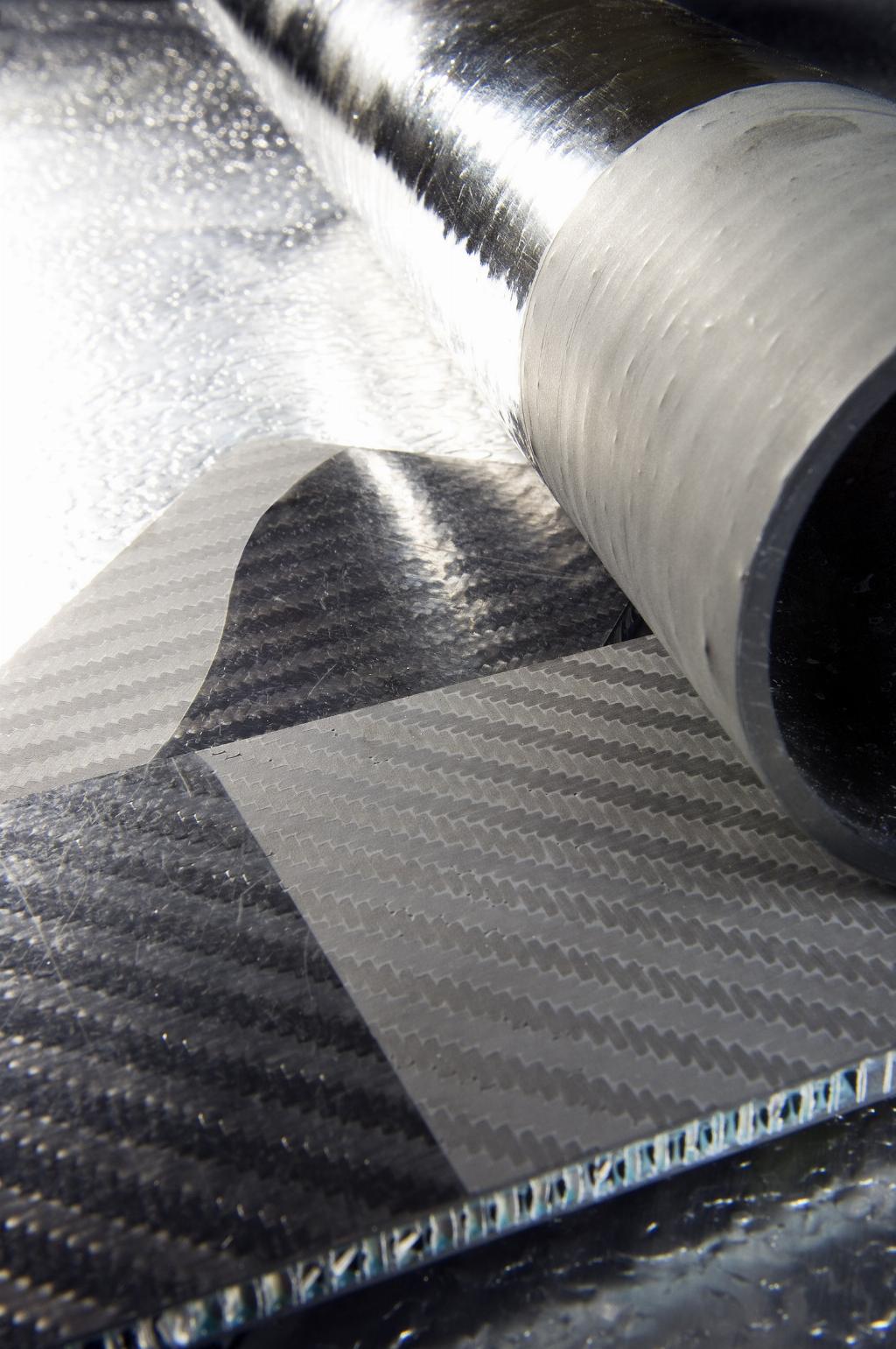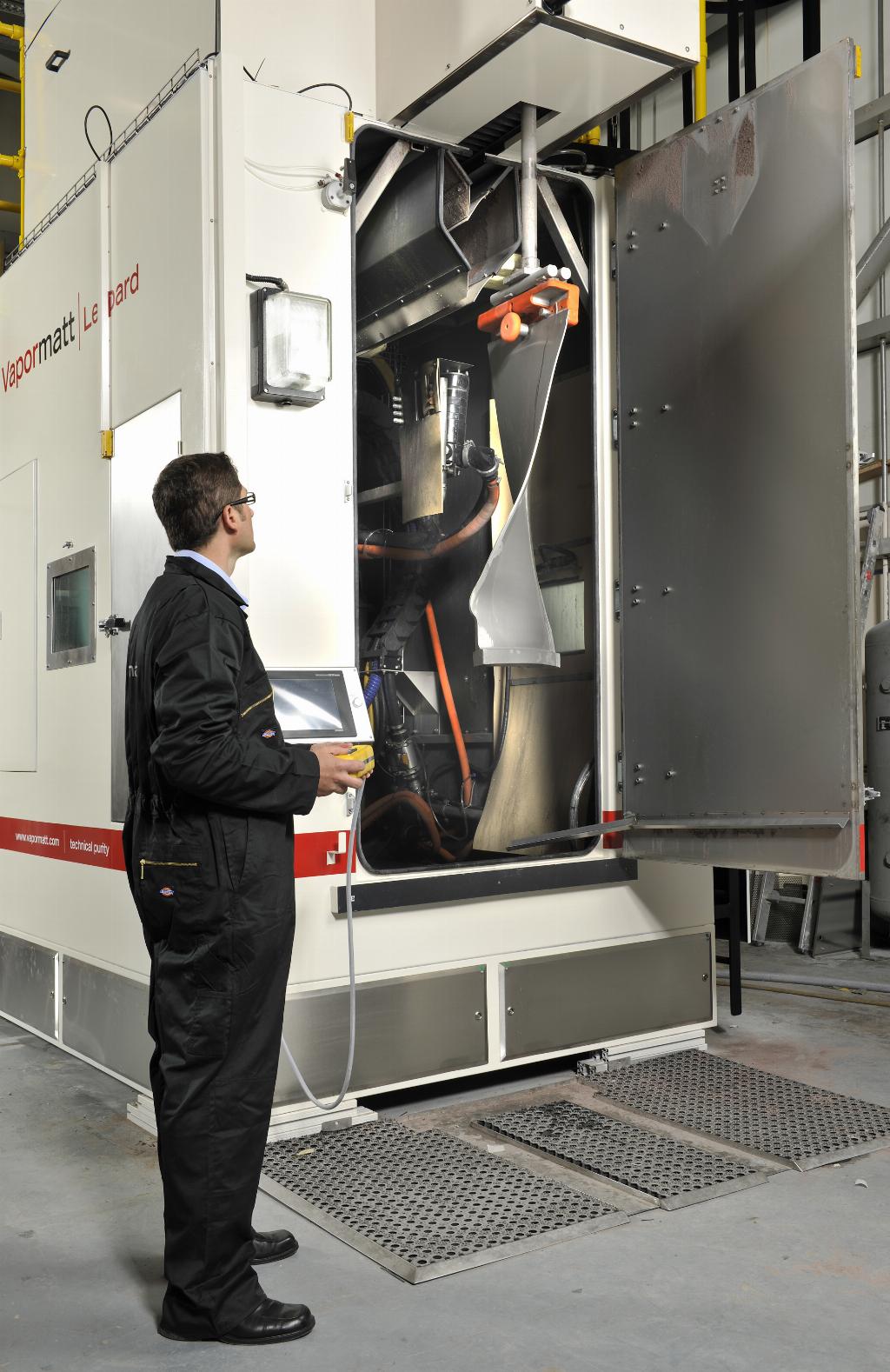Surface effects

Traditional methods to clean and activate composite surfaces can be time-consuming and imprecise – hence automated techniques are coming to the fore. Lou Reade reports.
Blasting a material surface with plasma may sound like something out of James Bond – requiring at least a particle accelerator – but nothing is further from the truth.
“Plasma is not even hot – it’s only slightly above ambient temperature,” says Terry Whitmore, managing director of Henniker Plasma, which supplies a range of plasma treatment devices.
The technique is used to prepare many material surfaces – including composites – for processes such as bonding or painting. There are two variants: vacuum plasma, which encases components – normally large ones – in a chamber and treats their entire surface; and atmospheric plasma, which is used to treat smaller components – or portions of a large part.
“Plasma treatment does two things,” continues Whitmore. “It cleans the surface of organic contaminants, and it activates the surface – to make it more likely to bond.”
The charged ions in the plasma first break down organic compounds such as grease. The remnants are then removed in the gas phase, leaving the surface pristine. Next, it raises the surface energy, which ‘activates’ it, and promotes the adhesion process.
Adhesion has become a more important property for composites, as it allows them to be joined to metals to form ‘hybrid’ parts – which are well established in motorsports, and becoming increasingly common in the automotive industry.
Composite surfaces are traditionally prepared for adhesion by roughening them by hand – or ‘hand sanding’ – using a piece of Emery paper.
“The difficulty is to do it consistently across the whole part,” states Whitmore.
He reports seeing instructions in an aerospace lab to “lightly sand the part” – in preparation for bonding cable harnesses to the fuselage. This is open to wide interpretation, he says – meaning that an automated technique like plasma treatment ensures a more consistent surface activation.
Microscopic scale
Henniker recently used the technique to improve the mechanical properties of a natural fibre composite – by applying the principle at a microscopic scale.

It was a partner in UK-Biocomp – a project within the Composites Innovation Cluster – which has developed a family of reinforcement materials based on aligned natural flax fibres. They can be supplied as tapes in widths up to 170mm, or as full-width non-crimp fabrics.
“Ordinarily, composites based on natural fibres like jute or flax have lower mechanical properties than conventional materials,” comments Whitmore.
However, their low weight and low environmental impact made them a potentially attractive material for industries such as automotive.
“Plasma treatment helped to improve adhesion between the resin and the matrix,” he adds.
Whitmore is confident that this type of value-added application is the future for plasma treatment. He says the Henniker has already looked at applying polymer films onto material surfaces.
“If we use a polymer with liquid repellent properties, we can apply it to a surface at the microscale without affecting bulk properties,” he says.
Henniker is working with several companies to apply this kind of technology – with surfaces including hydrophilic and biocompatible.
Having a blast
Another intriguing way of treating composite surfaces is to wet-blast them, using what looks like a stream of dirty water. However, the particles in the water are carefully chosen to have the correct degree of abrasiveness. This aqueous solution, known as a slurry, is directed through a nozzle and over the surface to be treated. A multitude of factors – such as air pressure, nozzle angle, water temperature and the presence of detergents – determine how aggressive the process is. These can be controlled precisely and automatically.
Wet blasting is more commonly used on metals – but in this case it uses harder particles such as silicon nitride to clean and activate the surface. However, GRP and carbon fibre also need surface treatment: they are notoriously difficult to bond because of resinous material on the smooth surface – as well as the usual grease and dust. It is also critical that the fibres on the surface are not damaged.
“With carbon fibre, you must be careful not to be too aggressive, which would open the fibres,” says Phil Dawes, sales engineer at Vapormatt and an expert in the use of the technique.
For this reason, he says, wet blasting for composites will use a mild abrasive. At the same time, the presence of water has a buffering action that softens the action of the abrasive.
Vapormatt first applied wet blasting to composites more than 20 years ago, says Dawes.
“A Formula One team wanted to look into an alternative way of treating material surfaces for bonding,” he explains. “It was for carbon fibre in particular, but also for metals like titanium, aluminium and magnesium.”
The team never revealed details of how it was using the technique – in true F1 fashion. However, the contract did kick-start the use of wet-blasting for composite surfaces, and was subsequently taken up by many subcontractors to F1 teams.
As with plasma treatment, an advantage of the process is that it can give far more regular and repeatable performance than traditional methods: Dawes cites dry blasting, peel ply and hand flatting as some of the techniques – which are still in use – that wet blasting can replace. In peel ply, for example, a piece of tape is applied to the composite surface and peeled off in order to etch it. This is fine, he says, but is impractical for complicated shapes.
“Tape can’t get into all the cracks, but wet blasting can.”

He cites the example of critical parts such as suspension components. These are made from a carbon fibre strut (or ‘wishbone’) that is pushed into a titanium frame and glued into place.
“It’s critical that you get a good bond for this and for that, you need to abrade an internal surface.”
Wet blasting can be used to prepare both materials for the process – though, as well as using a different abrasive media, the nozzle pressure for the titanium part will be far higher than it is for the composite part.
In aerospace, wet blasting has been used to prepare the surfaces of enormous parts – including composite fan blades and propeller blades. And while motorsport and aerospace are the trailblazers in the use of the technique, Vapormatt has to look beyond them for commercial reasons.
“There are limited F1 and aerospace companies, so we need to look further,” says Dawes.
So the company has developed wet blasting applications for composites in other industries, such as medical (for composite knee joints), satellites, boats and sports equipment.
“There’s also the potential to use this for painting and lacquering,” he says. “Wet blasting can create a smooth finish – after which a clear lacquer can be applied, to show off the carbon fibre ‘weave’ finish.”
So while manual techniques are still used on composite surfaces, automated processes like wet blasting and plasma treatment can ensure a more repeatable process – as well as improving the properties of the final component









